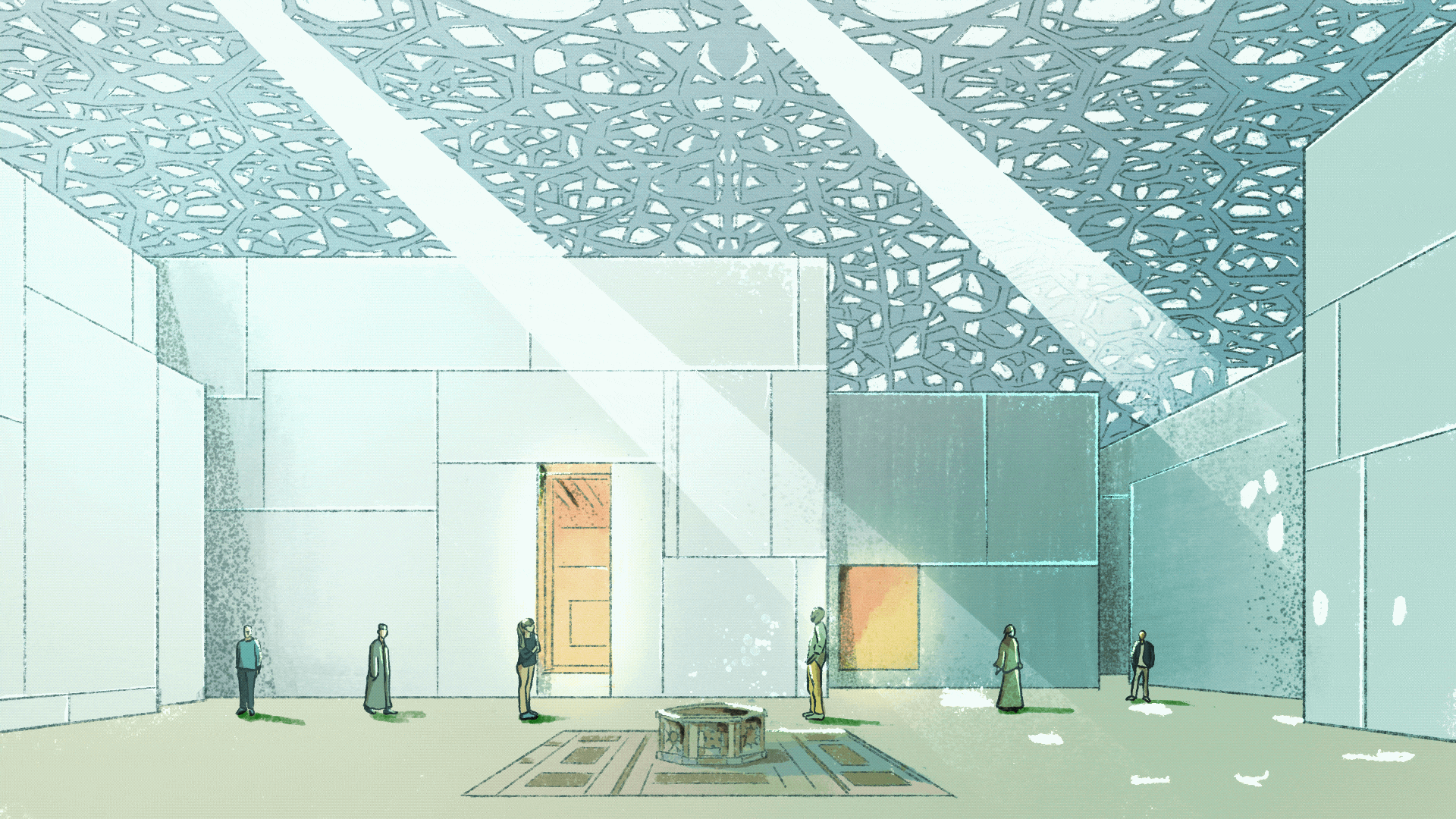
Home / News / humaneco /
Sweat beads on your forehead, your hair sticks to your temples, and you search your pocket for a handkerchief to help you compose yourself. It is excessively hot.
Your museum visit is booked for three o’clock, your salvation: silver domes providing shade, windows overlooking the sea, large shared spaces. There is no rush, only the silence of surprise. All around you, history, art and culture evoke the bright and fresh atmosphere of a medina.
The Louvre Abu Dhabi is a social space that has become a collective narrative, capable of generating connections between people, stirring ancient feelings and making architecture a human experience.
Intimate, profound, deeply rooted.
Komorebi
In Japan, there is a specific word to describe a phenomenon that is changeable by nature, difficult to define because it is so elusive. Komorebi is the term that describes the light filtering through the leaves of trees, its free, sometimes rebellious fluttering, full of motherhood that reassures and welcomes.

This phenomenon has no translation in the English language; it exists only in our eyes.
In Africa, on the other hand, there are apparently sixteen ways of saying green, one for each of its different shades. Or perhaps it is one of the many stories told to children in the Cradle to help them fall asleep without fear.
In words, green is the only colour we know here. Once again, its shades exist only in our eyes.
The languages of the world evolve and influence each other according to the people who speak them and the cultures that live them.
The same is true of architecture.
If you look up above you, at the silver dome that stirs your thoughts, you will recognise that komorebi, you will find another, new shade of green. Or blue, or yellow.
You are on an island in the desert, in Saadiyat, but what you see is not a mirage: it is the Louvre Abu Dhabi, the pioneering museum of an architectural hub that houses all the world’s greatest museums.
Who knows if Jean Nouvel, in designing this “mirage”, had the meaning of this Japanese word in mind. What is certain, however, is that he made it known to the whole world through the strength of steel, the branched structure and the silver reflection of the shadows.
Starting from a circle of sand surrounded by the sea and the hot wind of the United Arab Emirates.
Artisan delicacy
“Architecture is always a testimony to the spirit of the times and, at the same time, its resistance.” (Jean Nouvel)
The Louvre Abu Dhabi is a universal meeting place, a place on the edge of the sacred, a new medina where we find ourselves part of an artisan history, composed of small, tiny, human details that reverberate in possible futures.
The grandeur of the dome and the splendour of the galleries remind us that culture is the most solid umbrella against the aridity of the present.
Twenty thousand square metres of raised flooring, three thousand of which are unique, trace a path created by industrious hands, human ingenuity, patience and the measure that only the years, one after another, can teach.

Unprecedented off-scale cuts, local marble cladding such as Red Levanto and Black Saint Laurent, and bronze frames: each slab is a narrative fragment in dialogue with the works and people it supports.
Culture resists Time and Earth: the delicacy and elegance on which they rest are synonymous with, and not contrary to, strength and tenacity, designed to flex and reflect without ever wavering.
The technique here is artisanal, concrete, colossal.
Light rains down
Ancestral emotions, rooted in those who pass through them, move among the branches of white walls and perpetual arches. Architecture is the echo of a people, of an entire people, their silent, respectful and modular refuge.
To design a space, to erect it in its grandeur is not enough. It is necessary to descend down and down, to the memory and values of that people, of that entire people: to welcome its battered past, to guard its roots as one guards gold, to transform them into shared material yet to be fulfilled.
Light, air, warmth and sound envelop you: thus architecture becomes a collective experience, mutual recognition, a home that welcomes and restores identity.
Reverberations, in gesture and form.
Reverberations | Umaneco by Nesite ©all rights reserved
Texts edited by Chiara Foffano – Illustrations by Ariele Pirona